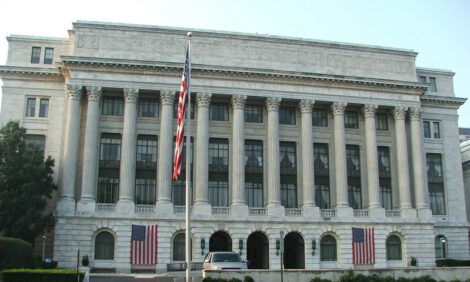



EU Trade Ban Brings Down Global Trade in Wild Birds
EU - Trade of wild birds has dropped about 90 per cent globally since the EU banned bird imports in 2005.A study published in the recognized scientific journal Science Advances demonstrates how the EU's ban decreased the number of birds traded annually from about 1.3 million to 130.000. International trade of wild birds is a root cause of exotic birds spreading worldwide. The study was led by scientists from the Center for Macroecology, Evolution and Climate, University of Copenhagen and CIBIO-InBIO Research Centre in Biodiversity and Genetic Resources, University of Porto.
Birds are the most traded animals in the world. Historically, Europe has been the main importer of wild birds globally. Before 2005, when the EU banned trade of wild birds, Belgium, Italy, the Netherlands, Portugal and Spain accounted for the import of two thirds of all wild birds sold on the global market. The birds mainly came from West Africa, with 70 per cent of exported birds coming from Guinea, Mali and Senegal. Diederik Strubbe from the Center for Macroecology, Evolution and Climate, University of Copenhagen, elaborates,
When wild birds are caught and sold to another country it has consequences in both areas. In the country the birds are captured, it can lead to biodiversity loss. Likewise, our study shows that international bird trade is a main cause of exotic birds spreading around the world. The birds can damage local ecosystems, destroy crops and outcompete local birds. The EU trade ban, and the following dramatic drop in the number of traded birds, has strongly reduced this risk across most of the globe.
Before 2005, almost all wild bird exports were concentrated around two groups of birds. Passerines, which include popular pet birds such as the yellow-fronted canary and the common waxbill, constituted almost 80 per cent of exported birds while parrots accounted for about 18 per cent. After the EU trade ban, the picture reversed. Today, passerine birds constitute less than 20 per cent while parrots have increased to almost 80 per cent of all traded birds. Parrots are the most threatened group of bird species, and the bird most likely to establish in countries it not naturally occurs.
Trade routes have shifted away from Western Europe
West Africa's role as main exporter of wild birds has been taken over by Latin America, and the continent is now responsible for more than 50 per cent of global wild bird exports. Important new buyers on the market include countries such as Mexico and the USA, whose imports have increased from about 23.000 to 82.000 birds annually. Luis Reino, from the CIBIO-InBIO Research Centre in Biodiversity and Genetic Resources, says,
Worryingly, we document a shift in wild bird trade towards areas with a high biodiversity. For example, several south-east Asian nations have emerged as important bird importers. These regions are now exposed to a higher risk of bird invasions. Thus, our results clearly speak for a global wildlife trade ban, if we want to reduce the number of traded birds, and minimize the risk of exotic birds spreading. The positive thing is that our study shows such a policy will likely be effective.








